Cheomseongdae “Star-Gazing Tower” Is The Oldest Observatory In East Asia
A. Sutherland - AncientPages.com - The Cheomseongdae Observatory located in Gyeongju, South Korea originates from the flourishing Silla period. Constructed in 632, the Cheomseongdae (“star-gazing tower” or “star-observing terrace”) is the oldest astronomical observatory in East Asia.
Cheomseongdae Observatory at night. source
It is a stone cylindrical-shaped structure composed of 362 granite blocks that represent the 362 days of the lunar year.
It is a symbol of early astronomy and the Southern observatory of the European astronomers working in Chile is called – Silla.
The structure - located near to the royal tomb of King Naemul of Silla - was built during the reign of Queen Sondok, the 27th ruler of the old Silla Kingdom in 634 AD. Queen Sondok (Seon-deok) was one of the first legitimate female rulers in East Asia’s history.
The observatory has twenty-seven levels of granite organized to resemble brick support the upper layers of stone that form the top platform. The granite stones are all concentrated in a round shape with four sets of parallel bars. So arranged, they form a square-shaped structure at the top. The granite brick construction is similar to the method used at Bunhwangsa temple, which developed from contact with Tang dynasty China.
Constructed in 634, Bunhwangsa (Famous Emperor Temple) is the oldest pagoda dated to the Silla Era. Once, the pagoda had seven or nine stories, but the upper stories have been lost over the years.
The pavilion stone is believed to have been used as a standard of deciding directions, north, south, east, and west.
Left: Model of the interior of Cheomseongdae; source: Right: Cheomseongdae Observatory, source
The ends of the parallel bars stick out several inches from the surface. Today it is not exactly known their purpose, but they might have been a support for a staircase inside the observatory. The twelve rectangular base stones are placed in a square, three on each side.
They represent the four seasons and twelve months of each year. The Vernal Equinox, Autumnal Equinox, Winter Solstice, Summer Solstice, and the 24 solar terms (the astronomical solar year) were determined by the observation of stars.
The purpose of the observatory was to observe the stars in order to forecast the weather.
The twelve tiers of stones to the window entrance and twelve tiers above the window opening also most probably symbolize the twelve months of the year. The observatory is 9.17 meters high and the base stone on each side measures 5.35 meters. Approximately, 4.16 meters up from the bottom, there is a one square meter entrance and a space to hang a ladder under it.
The inside is filled with soil up to the 12th level. The 19th, 20th, 25th, and 26th levels all have long rocks hanging on two areas, shaped as the Chinese letter ‘井’ (jeong). However, they could also represent the twelve symbols of the zodiac.
The Cheomseongdae observatory reflects a Chinese calendar with symbolic bricks. The bricks represent the days of the year, but parts also show the years of Queen Sondok’s reign.
Cheomseongdae has now its original appearance for about 1300 years since its construction in the 7th century. The structure is now slightly tilted to the north-east but the original shape is mostly intact. However, the instruments used for observation and observatory records have not been passed down, so the exact methods of taking observations are not known today.
Written by – A. Sutherland - AncientPages.com Senior Staff Writer
Copyright © AncientPages.com All rights reserved. This material may not be published, broadcast, rewritten or redistributed in whole or part without the express written permission of AncientPages.com
Expand for referencesMore From Ancient Pages
-
 Neanderthals And Homo Sapiens Invented Different Fire Techniques – Evolution Of Human Cognition
Archaeology | Jun 1, 2023
Neanderthals And Homo Sapiens Invented Different Fire Techniques – Evolution Of Human Cognition
Archaeology | Jun 1, 2023 -
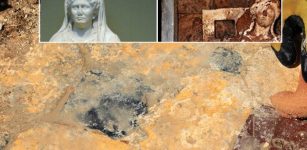 Sun Disk Unearthed On 3,500-Year-Old Rock Altar In Thracian Settlement, Edirne, NW Turkey
Archaeology | Sep 26, 2020
Sun Disk Unearthed On 3,500-Year-Old Rock Altar In Thracian Settlement, Edirne, NW Turkey
Archaeology | Sep 26, 2020 -
 Ceibal Is The Oldest Known Ceremonial Site Of The Maya Civilization
Ancient History Facts | Oct 1, 2016
Ceibal Is The Oldest Known Ceremonial Site Of The Maya Civilization
Ancient History Facts | Oct 1, 2016 -
 Buhl Woman Of Idaho: One Of The Oldest Skeletons In North America
Civilizations | Jun 3, 2023
Buhl Woman Of Idaho: One Of The Oldest Skeletons In North America
Civilizations | Jun 3, 2023 -
 Lunar Society: Great Scientists Of The 18th Century Who Changed The World
Featured Stories | Jul 13, 2018
Lunar Society: Great Scientists Of The 18th Century Who Changed The World
Featured Stories | Jul 13, 2018 -
 Being Anglo-Saxon Was A Matter Of Language And Culture, Not Genetics
Archaeology | Jun 23, 2021
Being Anglo-Saxon Was A Matter Of Language And Culture, Not Genetics
Archaeology | Jun 23, 2021 -
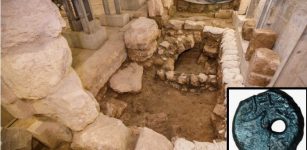 New Evidence Of The Destruction Of The Second Temple In The City Of David
Archaeology | Aug 5, 2023
New Evidence Of The Destruction Of The Second Temple In The City Of David
Archaeology | Aug 5, 2023 -
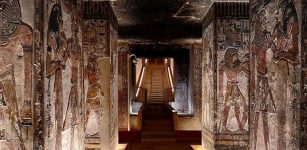 Why Pharaoh Seti I’s Tomb Had To Be The Most Glorious And Largest Ever Built In Valley Of The Kings
Featured Stories | Jun 19, 2021
Why Pharaoh Seti I’s Tomb Had To Be The Most Glorious And Largest Ever Built In Valley Of The Kings
Featured Stories | Jun 19, 2021 -
 Unique Female Viking Grave In Swedish Mountains Reveals Its Secrets
Archaeology | Jul 14, 2023
Unique Female Viking Grave In Swedish Mountains Reveals Its Secrets
Archaeology | Jul 14, 2023 -
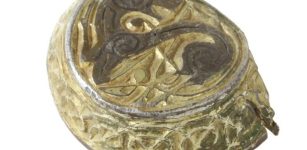 Strange 1,200-Year-Old Anglo-Saxon Artifact Used For Unknown Purpose Found In Norfolk, UK
Archaeology | Jan 18, 2024
Strange 1,200-Year-Old Anglo-Saxon Artifact Used For Unknown Purpose Found In Norfolk, UK
Archaeology | Jan 18, 2024 -
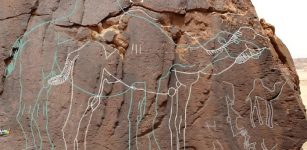 Remarkable Neolithic Life-Sized Camel Engravings Discovered In The Nefud Desert
Archaeology | Oct 5, 2023
Remarkable Neolithic Life-Sized Camel Engravings Discovered In The Nefud Desert
Archaeology | Oct 5, 2023 -
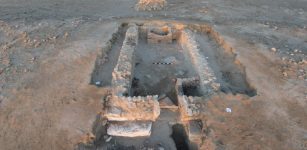 Unusually Arranged Skeletons And Artifacts Found Inside A 1,500-Year-Old Tomb In Berenice Troglodytica, Egypt
News | May 27, 2022
Unusually Arranged Skeletons And Artifacts Found Inside A 1,500-Year-Old Tomb In Berenice Troglodytica, Egypt
News | May 27, 2022 -
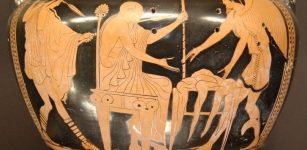 Prophet King Phineus Revealed The Future To Humans And Unleashed God Zeus’ Fury
Featured Stories | Nov 20, 2019
Prophet King Phineus Revealed The Future To Humans And Unleashed God Zeus’ Fury
Featured Stories | Nov 20, 2019 -
 Londinium: Ancient Roman Outpost That Became Powerful City Of London
Featured Stories | Aug 16, 2018
Londinium: Ancient Roman Outpost That Became Powerful City Of London
Featured Stories | Aug 16, 2018 -
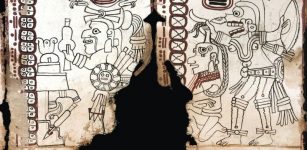 Once Looted Nearly 1,000-Year-Old Maya Text Is Authentic – Mexican Experts Say
Archaeology | Sep 1, 2018
Once Looted Nearly 1,000-Year-Old Maya Text Is Authentic – Mexican Experts Say
Archaeology | Sep 1, 2018 -
 The Bayeux Tapestry: One Of The Great Historical Records Of The Middle Ages
Artifacts | Feb 29, 2016
The Bayeux Tapestry: One Of The Great Historical Records Of The Middle Ages
Artifacts | Feb 29, 2016 -
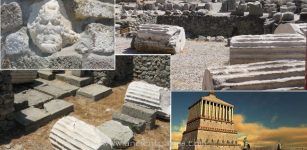 Halicarnassus’ Monumental Tomb Built With Shining Stones Belonged To Carian Ruler Mausolus
Featured Stories | Jul 20, 2016
Halicarnassus’ Monumental Tomb Built With Shining Stones Belonged To Carian Ruler Mausolus
Featured Stories | Jul 20, 2016 -
 What Can The 3D Reconstruction Of The Principia At Novae Reveal About Roman Propaganda?
News | Sep 16, 2023
What Can The 3D Reconstruction Of The Principia At Novae Reveal About Roman Propaganda?
News | Sep 16, 2023 -
 Mystery Of Ancient “Magical” Mirrors – Some Of The Strangest Objects In The World
Ancient Mysteries | Apr 21, 2011
Mystery Of Ancient “Magical” Mirrors – Some Of The Strangest Objects In The World
Ancient Mysteries | Apr 21, 2011 -
 Wendigo: Cannibalistic Shapeshifter In Mythology Of Indians Of North America And Canada
Featured Stories | Sep 3, 2016
Wendigo: Cannibalistic Shapeshifter In Mythology Of Indians Of North America And Canada
Featured Stories | Sep 3, 2016


